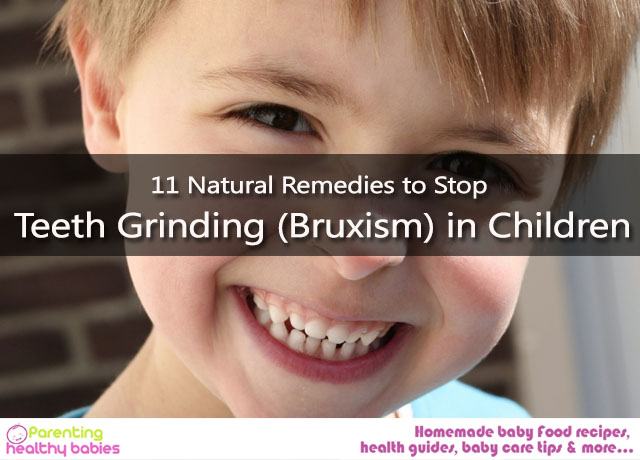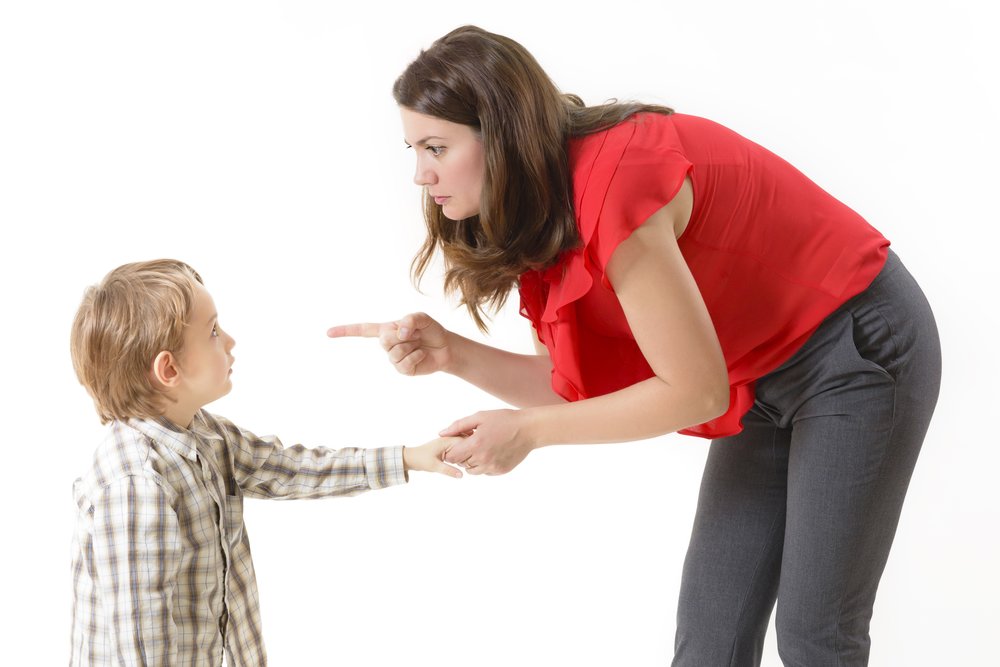Do you hear gnashing or grinding sounds from your child as he or she sleeps? Well, if you do, the most common reason is bruxism or teeth grinding. This occurs in children at night commonly. Less commonly, tooth grinding may occur during daytime as well, when it is given the name bruxomania or awake bruxism. Bruxism may occur in either boys or girls. It may occur during the phase of baby teeth and persist as the permanent or adult teeth start to emerge in the mouth (at about 6-7 years).
Read More: Baby Teethers: Ultimate Guide for New Moms
So what causes bruxism or teeth grinding in children?
There are a number of known causes of bruxism. Most researchers believe bruxism has a psychologic basis. Children showing bruxism may have more stress, anxiety and depression than other children. Sometimes, bruxism may be associated with brain disorders which have a genetic basis. Malfunction of brain neurochemicals such as dopamine can also cause bruxism. Certain medications such as anti depressant medicines and amphetamines may also cause bruxism.
What are the signs and symptoms of bruxism?
A common sign of bruxism in night time teeth grinding sounds that emanate from your child. Another sign is a lot of tooth wear and tear. For example, the tooth surfaces may be fractured (broken), flattened or chipped off. Your child may complain of tooth pain or increased sensitivity (unpleasant hot and cold sensation). Jaw muscle pain or fatigue may also occur since constant teeth grinding causes tiredness in supporting oral muscles. The tongue and cheeks may show indentations or marks which are created by the teeth chewing on the cheeks or tongue. A dull headache, especially around the temple area, or earache may also be seen. Frequent sleep disturbances are also a common sign of bruxism. Dental fillings or restorations may break or chip off as well, due to pressure of teeth grinding or bruxism. Clicking sounds or pain in the jaw joint, called temporomandibular joint may also crop up.
Read More: Are Baby Teeth as Important as Adult Teeth?
So what are the ways by which you can help your child to stop teeth grinding or bruxism?
Read on for more information on 11 natural remedies to stop tooth grinding (Bruxism) in children –
11 Natural Remedies to Stop Teeth Grinding (Bruxism) in Children
1. Stress reduction
A primary goal to relieve bruxism is stress relief. A few methods to try are meditation, muscle relaxation, deep breathing and yoga. Counseling or talking therapy and play therapy may also help children let out their anxieties and fears and reduce psychologic component responsible for bruxism.
2. Yoga for bruxism
Yoga is well known for relaxation and can help reduce the effects of stress induced disorders such as bruxism in children. Some yoga poses for children with bruxism include eye poses – close the eyes and then move your eyes to the left and right, twenty times each side. Next is the warrior or Virabhadrasana pose. Stretch your arms to the sides and lean on one leg to one side. This pose stretches the entire body and helps relax it. The camel or Ustrasana pose is also a good relaxation pose. Kneel on a yoga mat and place your arms on your hips. Arch your back and neck backwards as much as comfortably possible and hold the pose for about a minute. Another yoga pose for stress relief is the bridge pose or Setu Bandhanasana. Lie on your back with knees bent and feet on the floor. Straighten your arms and keep thighs and feet parallel. Hold for up to a minute. Only attempt as much stretching and bending as comfortably possible, for all yoga poses.
3. Herbal tea
A cup of herbal tea brewed and drunk before bedtime helps to de stress and ease bruxism. Green tea or chamomile tea bags soaked in hot water for a few minutes will do the trick effectively. Lemon juice and honey may be added to the tea for extra benefit.
4. Turmeric and milk combination
Add a pinch of turmeric to a cup of milk and mix it well. Make your child drink it daily before bedtime. Turmeric acts as a painkiller. A drop of honey may also be added to this mixture.
5. Sleep hygiene
A child with bruxism may have disturbed sleep. It helps to have good sleep hygiene for a child. This involves limiting daytime naps to about half an hour daily, providing good sleep conditions such as dim light and reduced noise and avoiding stimulants such as tea or soft drinks containing caffeine before sleeping. This will ensure a good night’s sleep for a child.
6. Muscle exercises
A few jaw muscle exercises, if practiced regularly can help in relieving jaw pain and tension due to bruxism. Take a look at a few stretching exercises.
- Stretching exercises – First, clench your jaw muscles tightly, then slowly release the muscles and relax them completely. Another exercise is stretching of jaw muscles. This can be done by
7. Aromatherapy via essential oils
A drop of essential oils such as lavender oil, rose, bamboo and chamomile if added to baths or on the pillow, helps to calm the senses and relieve stress. Stress relief helps reduce tension induced bruxism. Essential oil massage of jaw, head and neck is also beneficial.
8. Warm compress
Apply a warm compress in the form of a warm towel or warm water bottle to the jaw, head or neck to ease pain and inflammation. Be careful not to apply burning hot compresses to prevent burn injury to soft tissues.
Read More: Is My Baby Teething: 11 Sign of Teething
9. Joint massage
Massage of the jaw joint and muscles, also called temporomandibular joint, is also an effective way to relieve jaw joint pain. The target is the masseter muscle which hangs from the cheekbone to the border of the lower jaw. Three types of joint massage are beneficial-
- Kneading massage – Gently knead or move your fingers in a circular motion over the cheek area and moving backwards till the ear. Kneading massage increases blood flow, warms the masseter muscles and removes toxin build ups to the affected regions and relieves pain.
- Friction massage – Move your finger along the jaw line of the lower jaw (mandible) and gently apply pressure to this area. This will relieve pain and tension along the mandibular (lower jaw_ muscle.
- Stretching massage – Place two thumbs parallel to the lower jaw (mandible) line. Next, press and pull the mandibular (lower jaw) muscle away from the upper jaw (maxilla). This stretching of the mandibular muscle will provide stress relief.
10. Head and neck massage
Head and neck pain is often associated with jaw clenching or bruxism. Kneading of neck and shoulders that presses and pulls tissue helps in muscle relaxation. Circular massage movement also helps ease muscle tension.
11. Deep breathing exercises
Deep breathing helps in stress relief and decrease of muscle pain. Choose a spot free of distraction and noise. Take a deep breath, hold for about a minute or as much as comfortable and release. Repeat 10 to 15 times.
Bruxism is a condition that can be managed by taking adequate stress relief measures and understanding the problem. If the problem persists for a long duration, a visit to a children’s dentist or pediatric dentist may help.
Stay natural, stay healthy!
References
https://www.ncbi.nlm.nih.gov/pmc/articles/PMC3081266/
https://www.colgate.com/en-us/oral-health/conditions/temporomandibular-disorder/tmj-massage-to-relieve-jaw-pain-1115













